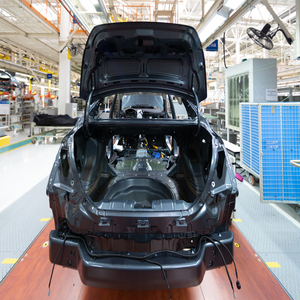The demand for private number plates is increasing amongst passionate car owners. However, purchasing personalized number plates is just the start of the process as you also will need to take care of them in order to ensure that your number plates remain in good condition in the long term. In order to maintain your number plates, it is important to clean them at regular intervals. Whilst most people focus on cleaning the interior and exterior of their car, they often overlook the cleaning and the maintenance of their car’s number plates. Cleaning the number plate at the front and rear of your vehicle is as important as maintaining the other parts of the car.
If you would like to know how to best clean your private number platesthen please read further. Here are the steps you need to take to ensure your number plates are maintained:
- Essential Equipment Required
In order to clean your number plates, the first thing you need to do is obtain the appropriate tools and equipment. One of the essential tools you will need is a screwdriver for the removal of the screws attaching the number plates to your vehicle. You will also need a toothbrush or a cleaning brush and a clean soft towel or cloth. You will also need high quality automotive cleaner and warm water. In addition to these items, you may require a clean sponge and an acrylic compatible solvent.
- Remove the Number Plate
Once you have the tools and materials, you will be able to start the cleaning process. First of all it is recommended that you remove the number plates from your car. This will make the cleaning process easier and you will be able to clean the edges of the number plates without worrying about scratching the paintwork of your vehicle. Make use of the screwdriver in order to remove the screws from the number plate. The ease of removal of the attaching screws will mainly depend upon how rusty they have become. If your number plate is very old, removing the screws may be a little tough and may take longer than you would expect. With the application of WD40 or an alternative release agent the screws will be released and with some determination you will be able to release them. If the screws of the number plate have corroded significantly, it will be preferable to clean them without removing them from the vehicle. If the number plates are secured with double sided tape then you will need to use taught fishing line to cut through the tape without scratching the paintwork of your vehicle.
- Clean the Number Plates
When you have removed the number plates from your car, you need to clean them thoroughly on their faces, at their edges and at the rear of the number plates. Place each of your number plates in a suitably sized container with warm water. Add a liquid automotive soap to the warm water with the aim of ensuring the removal of road tar. After soaking the plate for about 10 minutes in the water, clean the fronts first, with the use of a soft scrub. If you are peeling off double sided tape from the rear of the number plates use the acrylic compatible solvent to remove the remnants of the tape from the reflective material of the number plate.
Clean the Frame
After cleaning your private number plates, the next step is to inspect the frame of your number plate. If your number plate has a frame, check for damage at its edges. If it is in poor condition, it is recommended that you buy a new frame. To clean the frame, make use of more clean warm water and liquid automotive soap. Scrub it thoroughly to remove all the dirt and road tar. Once you have cleaned both the number plate and its frame, make sure to dry them using a clean and soft towel. It is preferable to use a new micro-fiber cloth for this.
- Treat the Number Plate
The next step is to treat your number plate in order to make it look like a new number plate. You should use a ceramic wax for this. Using a high quality ceramic wax for your private number plates will produce a highly polished look. It will help to remove micro-scratches from the face of the number plate. Apply the ceramic wax to all parts of the number plates. This will help to prevent further deterioration in the condition of the number plates so increasing the life of the number plates.
- Reinstall the Number Plate
Once the number plates have been cleaned and treated as described, the final step will be to refit the number plates. Before refitting the number plates to your vehicle make sure that the number plates, and the attachment screws are completely dry. This will help to avoid the chances of corrosion particularly with regard to the threads of the screws. If the screws are badly corroded, it is advisable to replace with new. Using the screwdriver attach the number plate to your car making sure it is aligned as it was. You can also use protective caps to prevent excessive future corrosion of the screws, if these are not already used.
Conclusion
Cleaning your number plates at regular intervals is important. It helps in removing dirt and road tar from the surface of the plate, avoiding the possibility of excessive corrosion, and increasing the life of the number plates. Following these simple steps will ensure you clean your number plates effectively. Cleaning your number plate regularly will enhance the overall look of your car.





